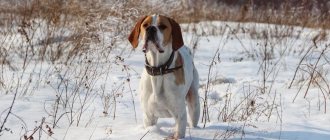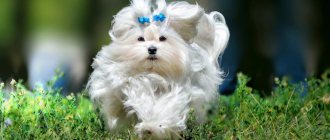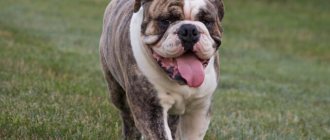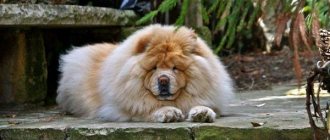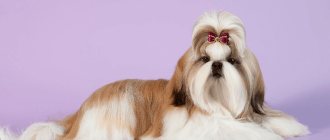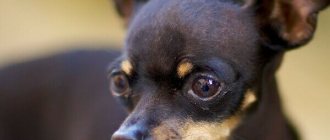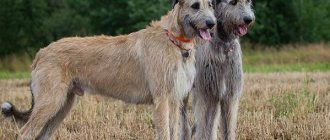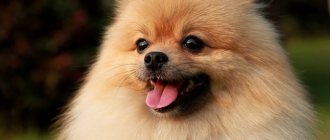Not only professional breeders need to know what colors of horses there are. The ability to understand these beautiful animals shows a person’s high cultural level.
Features and description of a bay horse
The bay color of the horse is the most common color in the world; it can be found in almost any breed. The only exceptions are some artificially bred ones, such as, for example, the Dutch Friesians. So why is the horse called bay and not brown or brown? This question arises for many, but the etymology of this word is difficult to determine only by ear.
In ancient times, brown horses with a black mane and tail were associated with fire and the black fumes from it; the Latin version of this comparison is pronounced “gnidor” and is often found in ancient legends and epics. Later, horses of this color began to be called “bay”, and even later – bay.
A horse is usually classified as bay if it has a body painted in brown tones, from light to almost black, and its tail, mane and lower legs are black. It is worth noting that the ancestors of all existing domestic horses were bay.
The so-called wild color allows for an admixture of brown hair in the mane, tail and legs. It happens that the offspring of bay horses are born with light-colored legs, but with age, the color of the limbs of such foals in most cases changes to black.
Distribution of black color
Black horses are found in a variety of breeds, but only two breeds of horses are exclusively black.
The first of them is Frisian. The Friesian is a black horse that was bred centuries ago in Holland. It is distinguished by its expressive appearance, beautiful and spacious movements, friendliness and a very long tail and mane.
The second exclusively black horse represents the French Ariège breed. Arrieges are allowed to have small white markings on the head and, in winter, reddish-brown markings. The black horse is often found among the Trakehner and Hanoverian breeds, German and Dutch half-bred horses, Percherons, Shires, English thoroughbreds and American trotters.
The black horse is less common in the Arabian and Akhal-Teke breeds, but in the Tersk, Budenovsk and Don breeds, black horses are quite rare and most often are not purebred and are not allowed for breeding. Black color looks much more impressive in the sports arena, which is why in recent years many European stud farms have begun to actively breed black horses. A special contribution to the popularization of the color was made by the black Totillas, a real star of the dressage arena of the 21st century.
Types of bay horse
The color of a bay horse varies depending on the undercoat. There are so many color options:
- light bay;
- dark bay;
- underhaired;
- bay deer;
- cherry bay or red;
- chestnut;
- golden;
- karakaya
A light bay horse has lightened areas on the face, around the eyes and on the belly, while the main color is comparable to dark dun. The hair of the mane and tail is brown, the legs below the hocks are black with the same brown tint. A darker stripe often runs along the ridge, and zebroid coloring is possible on the legs.
The photo shows a light bay horse
The dark bay horse is completely different. It is often confused with the tan crow or the karakova. The upper body in this case is almost black, the abdominal area is lighter, but not much. This undercoat can be compared to the color of dark chocolate.
The photo shows a dark bay horse
Underhaired horses are distinguished by light tan markings in the area of the eyes, nose and mouth, as well as in the groin area, on the elbows and on the buttocks. Deer-bay - combines a dark top and a light bottom, the legs, like other bases, are black.
In the photo there is a bay horse
The cherry bay coloration is perhaps the most impressive. Horses of this color are distinguished by a rich red-red hue of their coat, and in dark specimens it seems that the horse is completely cherry.
The mane, tail and socks are darker than the main color. The suit appears in all its glory in the rays of the sun when the horse is in motion. Such a beautiful underlayment is quite rare.
In the photo there is a horse of cherry and bay color
Chestnut suit explains everything with its name. These horses have a rich dark chestnut body color. Golden is the lightest option of all bays. The coat of these beauties has a yellow-brown color, shimmering with gold. Karakova is the other extreme among the bases. This is a bay horse with a black mane and tail, distinguished by a thick dark brown coat.
The photo shows a golden bay horse color
People who do not have the proper experience in determining suits easily confuse it with a crow, since its shade is so close to black.
Karak horse
Genetics
The gray color does not always appear at birth. Foals genetically predisposed to become “gray mares” may be born bay or black, and at the age of 3-4 years change greatly, becoming lighter in color. First, the head and belly of the horse are highlighted, much later the legs are brightened.
Due to ignorance, animals of this color were often considered old, hence the expression “bully's delirium.” After all, strange ideas and outright stupidity are characteristic of older people. With age, horses of any color turn gray; the color becomes much lighter than that of young animals.
Care and maintenance
Bay horses, like others, should be kept in clean and dry stables, free from drafts and dampness. The latter can provoke serious fungal diseases that are difficult to treat.
Daily hygiene procedures are a prerequisite for good horse health. Every day the animal needs to be brushed, wiped, and its hooves inspected for cracks. The horse must regularly receive physical exercise; if it is constantly in the stall, it will simply wither away. Clean water should always be available to the horse. Horses are famous water drinkers; they can drink up to 10 liters per 100 kg of weight per day, and up to 30 liters at a time.
The role of genetic factors in the formation of suit
It is worth noting that the main reason for this color in horses is genetics. Special combinations of genes manifested in young animals determine the basic pigmentation of the animal’s body and coat. Moreover, such combinations can be inherited from parents to foals in both unchanged and mixed forms.
When transmitting colors through generations, individual forms of specific genes - alleles - play an important role. Moreover, each allele corresponds to its own pigment. For example, if the main pigment is pheomelanin, then the horse’s hair will be red. When the E allele is manifested, the eumelanin pigment is responsible for color. In this case, the horse's color will be black.
Diluent genes
According to standard rules, when crossing two chestnut horses, the foal will definitely be chestnut.
Red foal
Reference. When crossing red and black horses, the probability of the appearance of red young animals is 50%.
But there are exceptions to such rules. They occur when particularly rare diluent genes are found in combinations of animal genes. These include the following:
- Dun. Manifesting in the horse's genotype, the alleles of this gene provide foals with a brown color.
- Cremello. The presence of this gene in combination with the others determines the horse's color as Isabella.
- Flaxen. Horses with this gene in their genotype become playful as they grow older.
It is worth noting that the action of congenital genetic factors in some cases can also be influenced by others. So, under certain conditions of detention, an animal with a reddish color can become completely bay. In the same way, red horses turn into horses with completely black hair. Moreover, unlike seasonal lightening of the coat, such changes in the appearance of the horse remain with him forever.
Chubaraya
Another spotted color is Chubara. Such horses have spots of different colors densely scattered across their white body. Depending on the location on the body and the shape of the spots, more than ten types of forelock are distinguished, for example chaprak, leopard, speckled, snowflake and others.
Although the forelock color is one of the most ancient (horses are depicted in cave paintings from Paleolithic times), now this color is extremely rare. It happens in the Appaloosa, Knabstrupper, Noriker, Altai and Yakut horse breeds.
Chubby leopard-type horse: Wikipedia
Breeding
Depending on what goals the breeder pursues, there are several possible crossing methods:
- Purebred crossing. Involves the mating of animals of the same breed. It is used to strengthen the breed of breeding horses.
- Linear crossing. Involves the mating of horses of the same kind. A mare that is used for breeding is called a broodmare. This method is suitable when you need to improve the characteristics of the genus.
Linear crossing is divided into two more methods (homogeneous crossing - within the same genus or heterogeneous crossing, which implies that the mare and horse will come from different genera of the same breed).
Inbreeding involves the mating of individuals who are closely related (for example, brother and sister). However, most often they take animals that have a common ancestor no closer than in the third generation.
This is due to the fact that even when crossing animals that are related in the second generation, foals are born very weak and with genetic abnormalities.
The industrial method is used to produce work horses. The criteria of speed, beauty and thoroughbred are not taken into account.
To get healthy and beautiful offspring, you must adhere to several rules:
- The horse and horses must be healthy (without genetic abnormalities). At the time of mating they should not have any diseases.
- The weight of the animals is of great importance. If the mare is heavier than the horse, the foal will turn out to be low and small. If the horse weighs more than the mare, then the foal will take only the best qualities from its parents.
- Most often, animals are selected so that they are of the same height.
- The main criterion from which to proceed when selecting individuals for mating is the goal pursued by the breeder (need a foal for riding and performing, a workhorse or a breeding horse).
- A month before mating is planned, special vitamins are added to the horse and mare’s feed.
Direct insemination of a horse can occur in two ways: artificial and natural. The artificial method is used if it was not possible to inseminate the horse naturally.
There are 3 options for artificial insemination:
- Fresh. It is considered the most effective, but this option is completely unsuitable for transportation. It is recommended to carry out this operation in the same stable where the stallion stands.
- Frozen. The most expensive way. The horse material is frozen using liquid nitrogen and delivered to the desired corner of the earth. The material retains its properties for 30 years.
- Chilled. It is used when the horse and mare are in different stables. The material of the horse retains its properties for 30 hours.
However, there are a number of males whose material loses its properties when frozen.
The natural method also implies several options for insemination.
- Pasture. It consists in creating a herd of horses of 12-15 heads (among which there is a dominant mare) for a stud horse. During the period of sexual activity, a horse is capable of impregnating 3-4 mares per day. With this method, the vast majority of mares from the herd are fertilized in a short period of time.
- Varkovy. It is used when it is necessary to cover a violent, obstinate mare. The entire procedure takes place under the supervision of a special trainer, who prompts and teaches the horse how to cover the mare. This method is extremely rarely used, as there is a risk of injury and sexually transmitted infections.
The gestation period of mares ranges from 11 to 12 months. During this time, the mare is relieved of heavy loads and is not ridden. Vitamin supplements are added to the diet.
If there were no complications during pregnancy, then labor takes place quickly (about 2 hours).
The influence of red color on character
Since ancient times, people have tried to find a connection between the color of a horse and its behavior. Some peoples believed that red horses had a grumpy character. The Arabs especially did not like them.
Nowadays, it is not customary to look for a connection between suit and character. It is believed that temperament and character are influenced by:
- Breed. But it is difficult to establish a direct relationship here, because almost every variety can have red representatives.
- Features of a particular animal. These qualities are inherited from parents and shaped by the environment. Much depends on living conditions and the behavior of the owner.
In both cases, the horse's red color does not play a role. Some people apply the saying to horses: “Whatever you call a ship, that’s how it will sail.” Although it is customary for professional breeders to name a horse based on the nicknames of its parents. If the animal does not participate in selection, you can dream up. Red pets are given nicknames like Rusty, Zorro, Chubais, Bucephalus or the like. People believe that this changes the pet's character in the right direction.
Breeds
Cleveland Bay Horse
Every breed has bay representatives, and this is no coincidence. It is popular among breeders and horse breeders.
The Cleveland bay breed stands apart. There are only animals of this color here. They are powerful, chestnut in color. The breed is very old, and was bred in medieval England.
Savrasaya
Savras color is the oldest horse color. Because of this, it is also called wild. Thanks to the special colors, owners of the savras suit can camouflage well. A number of “wild markings” help horses do this. They form different dark patterns on the animal's body: a belt on the back, a web on the forehead, a mask on the face or frost on the tail.
Savras color is present in many breeds: Bashkir, Vyatka, mustangs, Polish skates, Belarusian draft horses and American quarter horses. In artificially bred breeds, for example the Trakehner, the savras color is not found. Since the ancient ancestors of horses had the savras color, it can easily be analyzed through a DNA test.
Gray
The gray color is formed due to the early graying of any of the possible colors. Because of this, it is very common. Animals begin to turn gray at different times, sometimes even before birth. Gray horses are usually born hyperpigmented, with a pronounced presence of pigment in the coat and hair.
The gray coat retains the color of the eyes, skin and hoof horn, only the base color of the hair changes. The shades of the gray horse are very diverse, from light gray to pink and red-gray. Gray horses with apple or buckwheat patterns are often found. Gray horses are found in almost all breeds.
Buckwheat gray: Wikipedia
White-born
Typically, a horse with a pure white coat will be light gray or light Isabella. However, the white color of horses does exist, although it is extremely rare. White-born horses, contrary to popular belief, are not albino. They have pink skin, dark eyes and white fur.
Beautiful animals come in a dozen colors. It never hurts to demonstrate your horizons and name the correct color of the animal.
Original article: https://www.nur.kz/household/pets/1941959-masti-loshadey-foto-opisaniya-i-nazvaniya/


